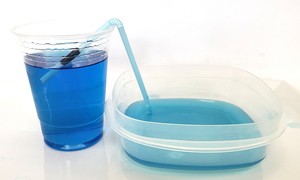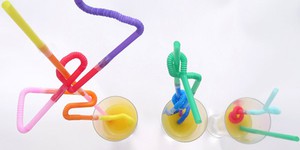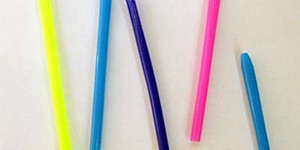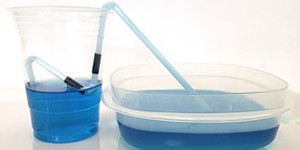Summary
Introduction
What's an easy way to move liquid from one place to another? A siphon! With just a little effort to get it started, you can then sit back and watch liquid flow from one container to another, as it seemingly defies gravity by going uphill. Try this activity to make your own simple siphon using straws.
Materials
- Flexible drinking straws
- Scissors
- Electrical tape or modeling clay
- Tall glass or container
- Shorter glass or container
- Water
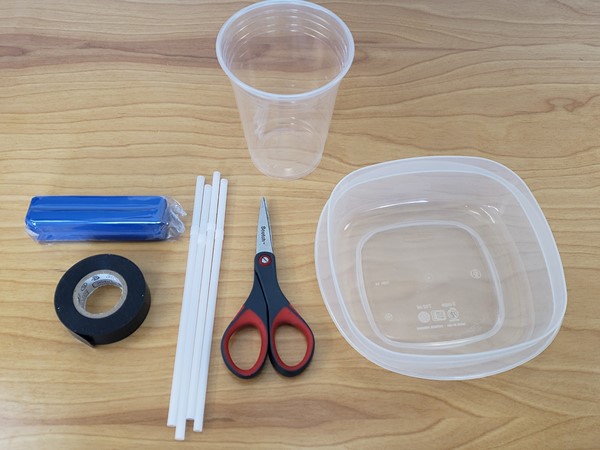 Image Credit: Ben Finio, Science Buddies / Science Buddies
Image Credit: Ben Finio, Science Buddies / Science Buddies
Prep Work
Instructions
- Fill your tall container to the brim with water and place it next to your small container.
- If needed, cut the long end of a straw so it fits into your tall container, with the flexible part resting on the lip.
- Place the long end of the straw into the tall container of water.Does anything happen?
- Remove the straw from the water.
- Now, place your finger over the short end of the straw.
- Quickly put the long end of the straw into the tall container, then release your finger.What happens this time?
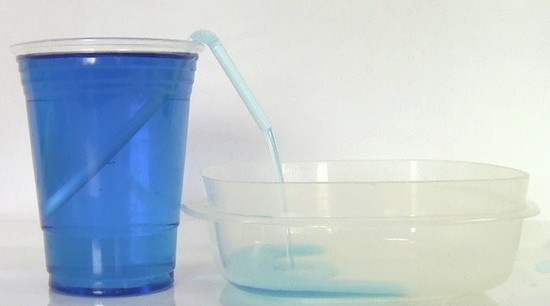 Image Credit: Ben Finio, Science Buddies / Science Buddies
Image Credit: Ben Finio, Science Buddies / Science Buddies
- Keep watching the siphon.When does the water stop flowing?
- Refill your tall container with water.
- Now try to make a longer siphon that can move more of the water.
- Cut off the long part of a straw.
- Cut one end to make a point.
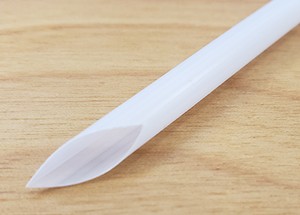 Image Credit: Ben Finio, Science Buddies / Science Buddies
Image Credit: Ben Finio, Science Buddies / Science Buddies
- Push the point into the short end of another straw.
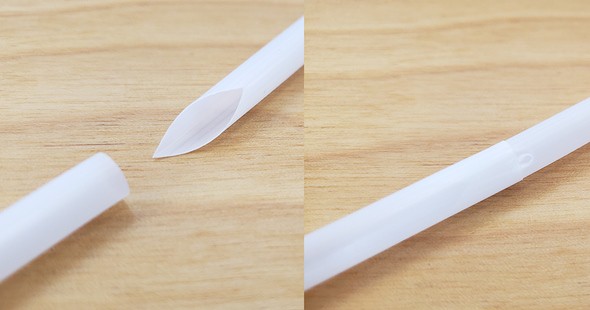 Image Credit: Ben Finio, Science Buddies / Science Buddies
Image Credit: Ben Finio, Science Buddies / Science Buddies
- Seal around the connection with tape or modeling clay.
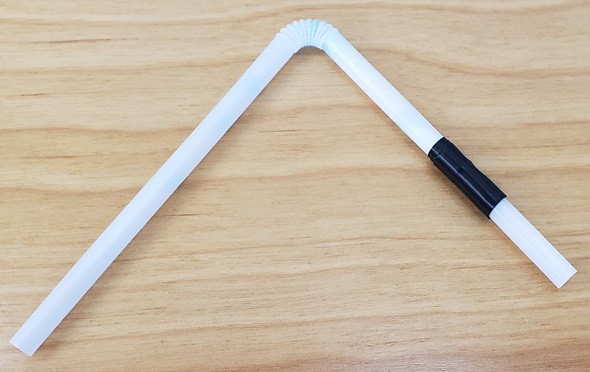 Image Credit: Ben Finio, Science Buddies / Science Buddies
Image Credit: Ben Finio, Science Buddies / Science Buddies
- Now, repeat the process you followed earlier. Cover one end of the straw with your fingertip. Quickly put the other end in the tall container and release your finger.What happens this time? How much water flows into the shorter container?
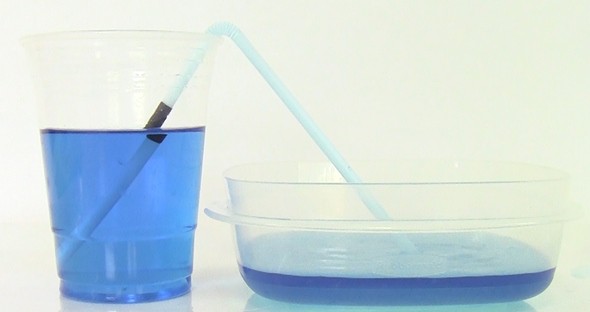 Image Credit: Ben Finio, Science Buddies / Science Buddies
Image Credit: Ben Finio, Science Buddies / Science Buddies
- Note: if you get air bubbles in the straw and the water stops flowing, you do not have a good seal around the connection between the straws. Try re-applying your tape or pressing the modeling clay on more firmly. Make sure there are no gaps where air could get in.
- Do you think you can start the siphon without covering one end with your finger? Check out the Self-Starting Siphon activity to find out!
Cleanup
What Happened?
When you put the single straw into the tall container and release your finger, water should shoot up over the top, then start flowing down into the other container. The water will stop flowing once the water level in the tall container reaches the same height as the other end of the straw. When you make a longer siphon (so the end in the short container is underwater instead of suspended in the air), the water will keep flowing until the water levels in the two cups are equal. Read the Digging Deeper section to learn more about how siphons operate.
Digging Deeper
The physics of a siphon can seem confusing and even counterintuitive at first. We all know that water flows downhill. It would be no surprise if you just poked a hole in the side of the taller container and water spilled out into the lower container. But a siphon requires water to go uphill first, going against gravity, before flowing down into the lower container. Because of this, the siphon needs a little help to get started. One way to do this is to suck the liquid through the straw. That is OK with water, but it is certainly a bad idea with a poisonous liquid like gasoline (so if you ever see someone do that in a movie or on TV—it is not safe!). Instead, in this activity, you plugged one end of the straw with your finger. This prevents air from escaping the straw, and therefore prevents water from entering the straw when you first insert it into the water. When you quickly release your finger, water shoots up the straw, and it has enough energy to make it over the top. Once the water starts flowing, it will keep going until the water levels in the two containers are equal (or, if the siphon's exit is above water, until the water level in the tall container is at the same height as the exit—this is explained by something called Bernoulli's Equation). The water in the second container can never get higher than the first container, because this would violate conservation of energy. That would be like a ball rolling up a hill all by itself!
Ask an Expert
For Further Exploration
- Does the height of the siphon's inlet matter? What happens if you hold the straw and keep the inlet just below the surface of the water in the tall container, instead of at the bottom? Does your siphon still work?
- Does the shape of your siphon matter? What happens if you connect more bendy straws or use flexible tubing to add loops to the middle of your siphon?
- Can you make a self-starting siphon that does not require you to cover one end with your finger? Check out the Self-Starting Siphon Activity to find out!


